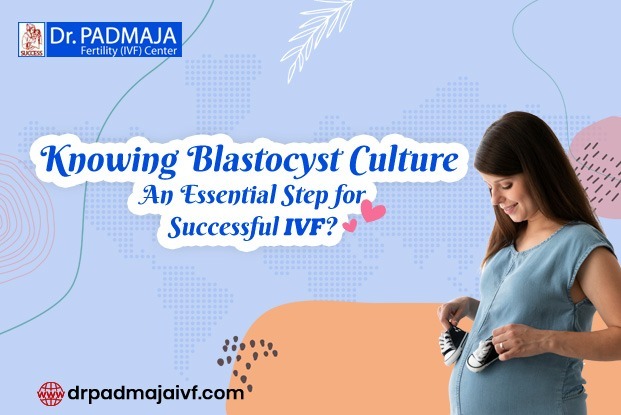In recent years, advancements in reproductive technology have transformed the landscape of fertility treatments. Among these innovations, blastocyst culture has emerged as a crucial technique in in vitro fertilization (IVF). This method has shown significant promise in improving the success rates of IVF, making it an essential topic for anyone considering this path to parenthood. If you’re exploring options at the best IVF center in Hyderabad, understanding blastocyst culture can help you make informed decisions.
What is Blastocyst Culture?
Blastocyst culture involves growing embryos in the laboratory until they reach the blastocyst stage, typically around five to six days after fertilization. At this stage, the embryo has developed into a hollow structure with an inner cell mass that will become the fetus and an outer layer that will form the placenta. This extended culture allows embryologists to select the most viable embryos for transfer, increasing the chances of a successful pregnancy.
The Importance of Blastocyst Culture in IVF
Improved Embryo Selection: One of the primary advantages of blastocyst culture is the enhanced ability to select embryos that are more likely to implant successfully. By observing embryos for several days, embryologists can assess their development and choose those that exhibit the best growth patterns.
Higher Success Rates: Studies have shown that transferring blastocysts instead of earlier-stage embryos can significantly improve IVF success rates. This is particularly relevant for women with specific fertility issues or for those undergoing multiple cycles of IVF.
Reduced Risk of Multiple Pregnancies: With blastocyst culture, doctors often transfer fewer embryos to achieve a successful pregnancy. This is beneficial in reducing the risk of multiple pregnancies, which can pose health risks for both the mother and the babies.
Better Synchronization with Uterine Environment: Transferring blastocysts allows for better timing with the uterine lining, which can enhance the chances of implantation. The embryo is transferred at a stage that is more aligned with the natural menstrual cycle, improving the likelihood of a successful pregnancy.
Choosing the Right IVF Center
Choosing the appropriate fertility clinic is essential when thinking about IVF. Hyderabad’s best IVF center, which includes Dr. Padmaja IVF Center, is renowned for its advanced techniques, experienced staff, and personalized care. The expertise of the clinic plays a significant role in the success of treatments like blastocyst culture.
At Dr. Padmaja Fertility Center, patients benefit from a team of skilled professionals who specialize in various fertility treatments, including blastocyst culture. With a focus on patient-centered care, the center provides comprehensive support throughout the IVF process, ensuring that each couple receives the attention and information they need.
The Process of Blastocyst Culture
Ovarian Stimulation: The IVF journey begins with ovarian stimulation, where medications are administered to encourage the ovaries to produce multiple eggs.
Egg Retrieval: A modest surgical operation is used to retrieve the mature eggs.
Fertilization: In a laboratory, sperm are subsequently used to fertilize the recovered eggs. Intracytoplasmic sperm injection (ICSI) or traditional insemination can be used for this.
Embryo Culture: The fertilized eggs (embryos) are cultured for five to six days until they reach the blastocyst stage. Throughout this period, embryologists keep a careful eye on their progress.
Embryo Transfer: The healthiest blastocysts are selected for transfer to the uterus. This procedure is typically quick and straightforward, often performed under ultrasound guidance.
Supportive Care: After the transfer, hormonal support may be provided to enhance the chances of implantation and pregnancy.
What to Expect After the Procedure
Following the blastocyst transfer, patients often experience a mix of emotions. It’s essential to maintain open communication with the healthcare team at the Dr. Padmaja IVF Center. They will provide guidance on what to expect in the coming days, including signs of pregnancy and when to take a pregnancy test.
Conclusion
Blastocyst culture represents a significant advancement in the field of IVF, offering hope to couples struggling with infertility. Its ability to improve embryo selection, increase success rates, and reduce the risk of multiple pregnancies makes it an essential consideration in any fertility treatment plan. For those seeking assistance, the best IVF center in Hyderabad, like Dr. Padmaja IVF Center, is equipped to provide cutting-edge care and support throughout the journey. Understanding the role of blastocyst culture can empower prospective parents to make informed decisions and enhance their chances of achieving their dream of parenthood. If you’re considering IVF, reach out to the experts at Dr. Padmaja Fertility Center to explore how this innovative technique can be integrated into your fertility journey.
About The Author :

If Dr. Padmaja Divakar is a public figure or a professional in a specific field, I recommend checking her official website, professional profiles, or reliable online sources for the most up-to-date and accurate information about her background, qualifications, and achievements.
Frequently Asked Questions (faqs)
1. What is Blastocyst Culture in IVF?
Blastocyst culture is an advanced IVF technique where embryos are cultured in the lab for five to six days until they reach the blastocyst stage. At this stage, embryos have a higher chance of implantation, increasing the success rate of IVF.
2. Why is Blastocyst Culture important in IVF?
Blastocyst culture allows embryologists to select the most viable embryos for transfer, as only the strongest embryos survive to the blastocyst stage. This helps improve implantation rates and, therefore, the chances of a successful pregnancy.
3. How does Blastocyst Culture improve IVF success rates?
By waiting until embryos reach the blastocyst stage, doctors can select embryos with the highest developmental potential. This selection process reduces the likelihood of miscarriage and leads to higher success rates in IVF cycles.
4. Who is a good candidate for Blastocyst Culture?
Blastocyst culture is often recommended for patients with a high number of quality embryos or those who have experienced previous failed IVF attempts. However, suitability varies, so a fertility specialist will advise based on individual needs.
5. Are there risks associated with Blastocyst Culture?
One risk is that not all embryos may develop to the blastocyst stage, which can be challenging if there are few embryos to begin with. However, for many, the benefits outweigh this risk, as blastocyst-stage embryos are more likely to lead to a successful pregnancy.
6. Does Blastocyst Culture increase the chances of a single, healthy pregnancy?
Yes, because blastocyst culture improves embryo selection, it often allows for the transfer of a single embryo, minimizing the risk of multiple pregnancies while still achieving high success rates.
7. How long does Blastocyst Culture take in the IVF process?
While traditional embryo transfer may occur on day 3, blastocyst culture extends this process to days 5-6. This gives embryos more time to develop, enabling better assessment and selection.

